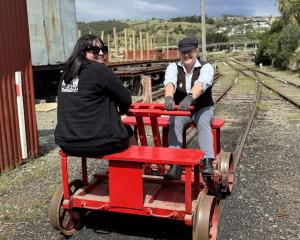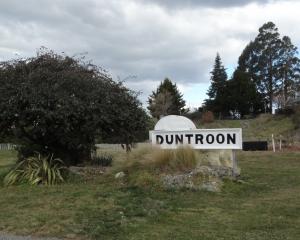The latest estimate just for protection work is $2.6 million, which does not include moving the road, repairs, ongoing maintenance or upgrading alternative routes.
Now the council wants to hear people's views and what they feel is value for money, ranging from keeping the road open at all costs to closing sections which fall to erosion.
The latest trouble spot is just south of All Day Bay, between Kakanui and Waianakarua, where sea has eroded part of the coastal bank, reducing the road to one lane and from a speed limit of 100kmh to 30kmh.
But that is only part of decades of coastal erosion that have caused sections of the road to be moved inland, one section o be closed because erosion became so bad and another road upgraded as a bypass.
The council first tackled the issue in 2010 through a coastal road review, after a section of the road between Gardiners and Thousand Acre roads collapsed.
It suggested some sections might eventually have to close, which prompted major opposition, with people demanding it be kept open for its scenic value and as a bypass when SH1 south of Oamaru was closed.
The council took another look at the problems last year, resulting in the ''Draft Coastal Roads Strategy 2013''.
That strategy has been made public for consultation, with the council calling for submissions as part of its annual plan process. Submissions close on Monday, April 22.
The strategy says: ''Keeping the coastal route open indefinitely is difficult and potentially unaffordable. Expenditure must be weighed in terms of the cost to the whole district and its long-term affordability within increasing constraints to funding.''
The strategy says the council will retain access to the existing coastal roading network ''where it is reasonable to do so''.
However, it also has to take into account the safety of road users, funding and roading subsidies that may be available and affordability for ratepayers.
Before any decisions were made about the road, or sections of it, the council would communicate with any affected parties. However, that process could be affected if erosion happened quickly.
The strategy looks at sections of the road and costs for protection. It considers alternative roads which could provide access from inland if sections of the coastal road were closed.
The council intends to keep the coastal road in service, if viable.
That might mean changes when minor erosion affected the route or where changes in road use might affect its sustainability.
Those changes could range from reducing the width of the road and speed limit reductions to heavy traffic limits.
The council is proposing to set aside $40,000 a year for targeted maintenance for coastal protection, used where it would best prolong the life of the existing road for as long as possible.
It would also work with adjacent landowners where erosion threatened the route, to investigate shifting the road inland.
Getting land at a reasonable cost would be important to any proposal to shift the road.
In its assessment of the cost of protection, the most expensive at $845,000 is the section on Beach Rd from Oamaru to Awamoa Central Rd. Once minor rock protection could not keep the road safe, it was suggested this portion be abandoned.
The next most expensive portion, at $780,000, is south of Kakanui, from Bowalley Rd to the end of the coastal section. It is regarded as the most prone to erosion and could be compromised at any time.
The strategy recommends it be maintained with rock protection until it became more cost-effective to provide alternative access, either shifting the road inland or upgrading Maclean Rd and Bowalley Rd. No cost was given for upgrading alternative access.












